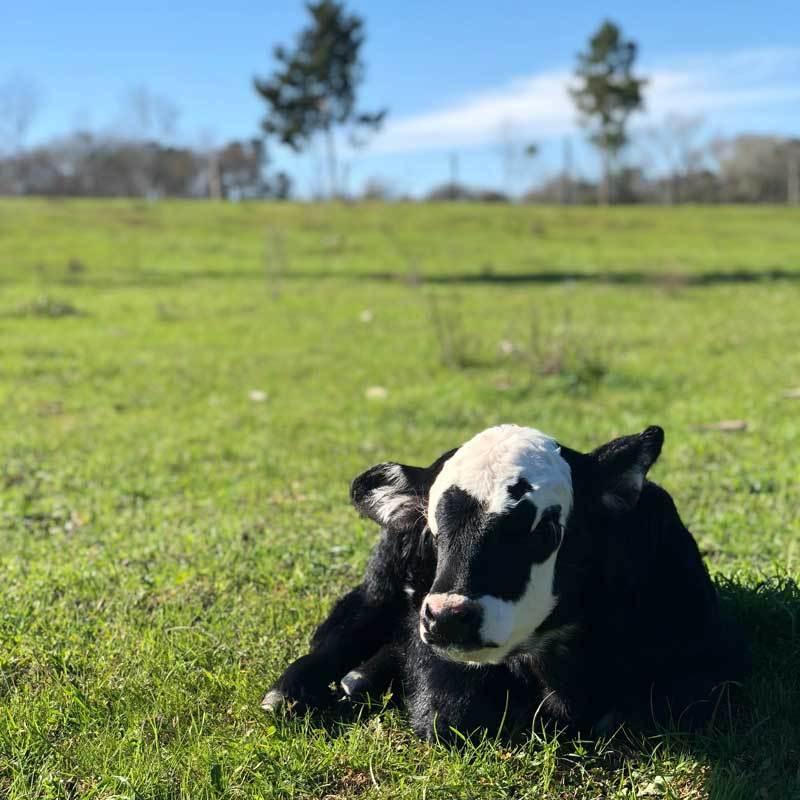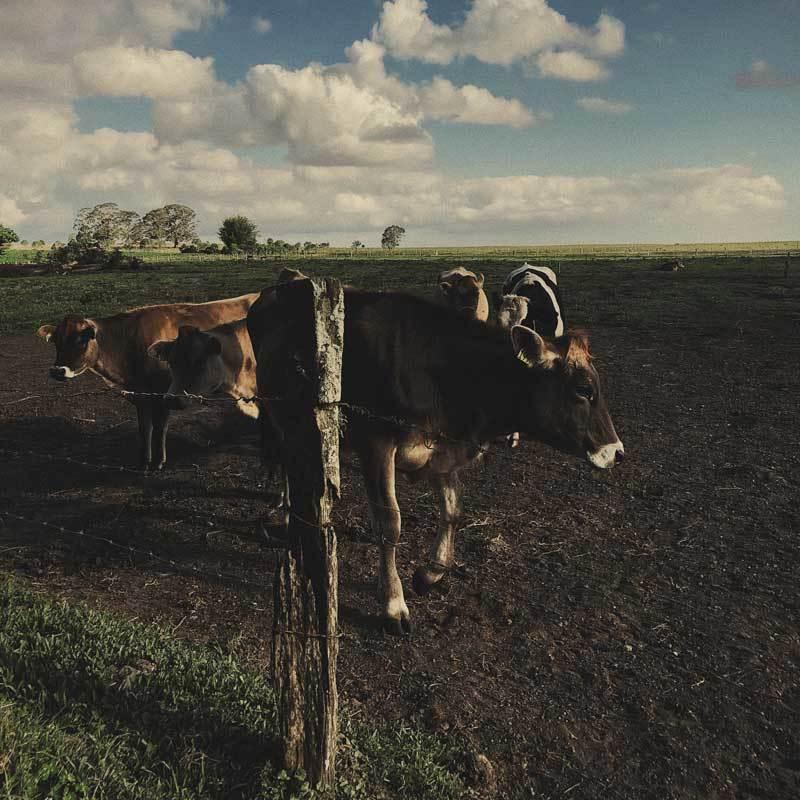Cattle Behavior and your Bottom Line | The connection you didn't know you were missing
Cattle Temperament and Handling: Improving Welfare and Your Bottom Line
Go Back to All BlogsPosted on: October 17, 2019
Updated on: January 5, 2026
Author: Liane Carter
SHARE:
Personality research in domesticated and zoo animals is a field of animal science research that has developed over recent years. New studies have shown that animals have personalities, and that working with their personalities can improve the overall welfare of animals. Learning about cattle behavior is highly beneficial to beef cattle operations, as improving the welfare of your livestock will have a direct impact on the economic viability your business.
Cattle personalities are often referred to as temperament and coping style to avoid anthropomorphism or projecting human behaviors onto an animal. For the purposes of this article, temperament and coping style are treated as sub-categories of animal personality.
In the past, we have examined post-traumatic stress disorder (PTSD) in cattle and how being handled can be perceived as the same as a wolf attack for cattle. Similarly, another blog post explores optimism and pessimism in cattle and how that affects their behavior. New research examines cattle personalities to a greater degree, including the many personality types that cattle have. Personality types can be compared to those of humans to make understanding cattle personality easier.
Animals have four personality factors: sociability, aggressiveness, boldness, activity, and exploration. Similar to the personality traits in humans, each animal has a different makeup and level of each trait, creating the individual personality. Equivalents of these traits in humans are extraversion, agreeableness, neuroticism, openness, and conscientiousness.
In cattle, their personality is measured based on their behavioral response or docility, the individual differences in behavior of each animal, and their temperament. Numerous tests are available and proven to measure the personality of cattle. Other species have their own personality tests.

Temperament and Coping
Temperament is closely related to personality and is often used interchangeably when referring to the personality of cattle. However, temperament is only one component of cattle personalities. Their response and individuality play an important role in personality.
Similar to humans, animals have coping styles that are related to their personalities. These coping mechanisms help them adapt to being handled, moved to different pastures or facilities, and introduced to new cattle. Coping ability is another aspect of the personality of cattle. While the majority of research on coping in livestock has been conducted on swine, this is an evolving field that will provide insight on how changes can be made to cattle handling that adhere to their coping style, and decrease stress.
Implications for Animal Welfare
How is personality related to animal welfare? The personality of an animal has a direct influence the behavior and physiology of that animal. Therefore, domesticated cattle create a feedback loop in the brain that is either positive or negative, depending on their individual physiology and behavior. The feedback loop impacts the welfare of cattle as they will fall somewhere on the spectrum between calm and content or stressed out and scared.
Cattle handlers should understand the personalities of their individual cattle whenever possible, and incorporate handling strategies that work with the personality of the cattle, rather than against. Understanding personality and working with it is helpful for cattle welfare, and can impact the economic bottom line as cattle require less human interaction, exhibit decreased stress, and yield a higher return on investment.
Use these tips to incorporate cattle personality in handling:
Handling cattle must always be done in a low-stress manner, with basic Stockmanship adhered to, including the flight zone and point of balance.
Cattle have wide-angle vision and will balk at distractions. Minimizing distractions in cattle areas and handling will create a better experience.
All handlers should be trained before handling cattle, and receive refresher courses on cattle handling regularly.
Learn to recognize animal behavior, and the personality indicators of cattle. Use these key indicators, for instance, when an animal shows the white of their eye, to dictate handling styles used, or adjust techniques.
Acclimate cattle to conditions they will be faced with, whether a chute, livestock trailer, or holding pen, prior to needing to work on the animal in that setting. Conditioning, or acclimating cattle to different situations has proven effective time and again in reducing stress and increasing efficiency in the long run.

Understanding the personalities of cattle, and incorporating them into low-stress cattle handling techniques will have two major benefits for cattle operations. The first is improved productivity, whether it is through less bruising of meat, increased growth, time saved or a combination of all of these benefits.
The second major benefit is decreased accidents during animal handling, to both the cattle and stockmen and women. All it takes is one injury to understand how debilitating accidents can be to an operation, and just one injury is one too many.
For far too long, cattle equipment manufacturers and leaders in the industry have turned a blind eye to rancher safety. Arrowquip decided that enough is enough. If you get injured while working cattle in your Arrowquip equipment and require medical attention, you will get your money back, no questions asked.
Animal science research in the field of personality continues to evolve. As cattle producers, our priority needs to be the sustainability of our operations. Incorporating research and new techniques of low-stress handling that use insights in animal personality will benefit any cattle operation in a myriad of ways.
Did you know that cattle experience PTSD?
References:
Personality Research in Mammalian Farm Animals: Concepts, Measures, and Relationship to Welfare
Crossing the Divide Between Academic Research and Practical Application of Ethology and Animal Behavior Information on Commercial Livestock and Poultry Farms